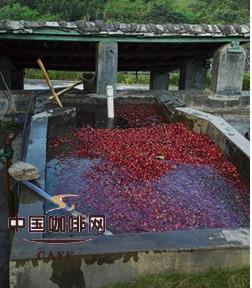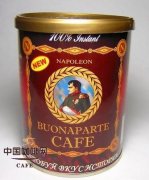Coffee beans: coffee beans, coffee beans, coffee beans

There are two ways to prepare coffee beans for the roasting process. The method chosen has a significant impact on the final price and quality of coffee. The cheapest process is called the "dry process" and is used for lower-quality coffee beans, while higher-quality coffee beans are processed by the "wet process."
The wet process requires more capital investment and effort, but it helps to maintain the quality of the coffee beans and reduce damage. The main difference between wet and dry methods is: in wet places
During processing, the pulp is immediately separated from the beans, rather than allowed to dry out as in drying.
The pulp is separated in a separating machine in such a way that the fruit is crushed in a machine having a fixed surface and a movable surface or in a machine having movable rods, whereby the pulp is separated from the coffee beans. In order to guarantee the quality of the coffee beans, the separation of the pulp must be carried out as soon as possible after harvest, ideally within 12 hours, but no more than 24 hours. If the coffee beans are left for too long, the pulp becomes difficult to separate from the coffee beans, resulting in incomplete separation and possible damage to the coffee beans.
The peel and pulp separated from the coffee beans will be washed away with water. The rinse tank is designed to have the function of separating light, tender coffee beans from thick, ripe coffee beans. Such separation can also be accomplished by an Aagaard classifier. A coffee grower in Norway, Ogl designed a device to sift coffee beans through filters into a large container of water while growing coffee in Kenya. The large, plump beans sink first, while the lighter beans stay in the larger container. During this process, water can be recycled.
The next step is the most basic fermentation, which uses enzymes to separate the creamy mucilage covering the endocarp. Coffee beans are stored in the fermenter for about 12 to 36 hours, depending on the ambient temperature, the thickness of the slurry, and the enzymes. When this process is complete, the endocarp around the coffee bean is no longer slimy but has a pebbly feel.
Quality control throughout the wet process is critical to prevent coffee beans from spoiling, as even one bean spoils, potentially damaging the entire bean. For this reason, the equipment used must be cleaned daily to ensure that no impurities remain before the next round of processing.
Important Notice :
前街咖啡 FrontStreet Coffee has moved to new addredd:
FrontStreet Coffee Address: 315,Donghua East Road,GuangZhou
Tel:020 38364473
- Prev

The basic knowledge of high-quality coffee beans the drying of coffee beans
After the wet treatment, the coffee beans are still preserved in the inner pericarp, which still contains about 15% water. The endocarp must be dried to a moisture content of about 11% to ensure that coffee beans are stored in a stable and safe environment. Water content is critical, because if Arabica beans are overdried to a moisture content of 10%, they will be lost
- Next

Boutique Coffee basic knowledge count the coffee that is more precious than Blue Mountain
Coffee name: Napoleon Origin: British St. Helena (Saint Helena Island, the claustrophobic island where the hero Napoleon was exiled) Farm: Napoleon Farm Variety: Bourbon Coffee name: blue Elise (Elise Blue) Origin: French New Caledonia (New Caledonia Island) Farm: Caf Kua
Related
- Beginners will see the "Coffee pull flower" guide!
- What is the difference between ice blog purified milk and ordinary milk coffee?
- Why is the Philippines the largest producer of crops in Liberia?
- For coffee extraction, should the fine powder be retained?
- How does extracted espresso fill pressed powder? How much strength does it take to press the powder?
- How to make jasmine cold extract coffee? Is the jasmine + latte good?
- Will this little toy really make the coffee taste better? How does Lily Drip affect coffee extraction?
- Will the action of slapping the filter cup also affect coffee extraction?
- What's the difference between powder-to-water ratio and powder-to-liquid ratio?
- What is the Ethiopian local species? What does it have to do with Heirloom native species?

